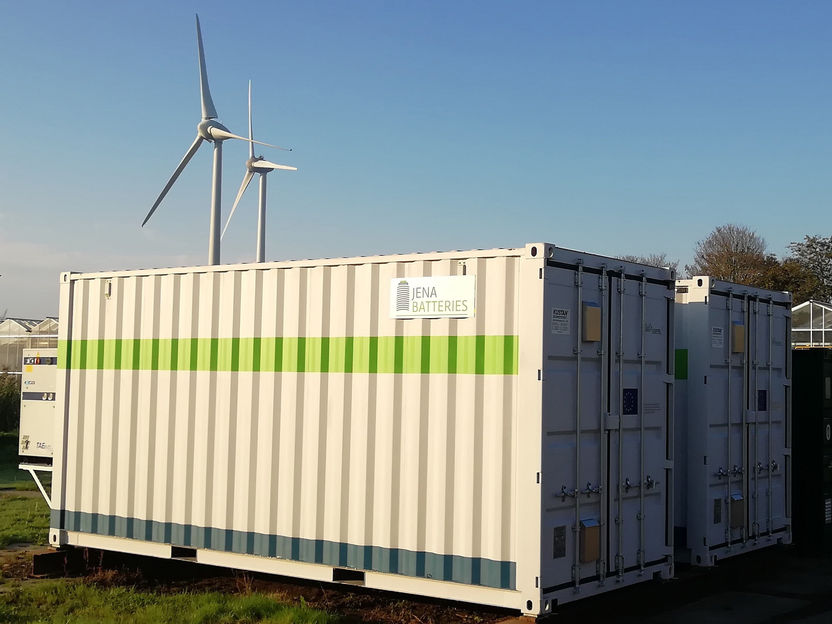JenaBatteries and BASF cooperate in the development of innovative power storage technology
Batteries for stationary storage of electricity from renewable energy sources
Advertisement
JenaBatteries GmbH and BASF are cooperating in the production of an electrolyte for a battery technology that is particularly suitable for stationary storage of electricity from renewable energy sources and for stabilizing conventional transmission grids. JenaBatteries, which has developed this technology based on a so-called redox flow battery (RFB) with organic materials, thus has the world's first commercially available technology of this kind. Two liquid organic electrolytes separated by a membrane and stored in separate tanks store the current. BASF will supply one of the two electrolytes as part of the collaboration. This battery material is based on an amine, a chemical intermediate that the company can produce on an industrial scale. JenaBatteries plans to market the first RFB in 2020.

JenaBatteries and BASF are cooperating in the production of an electrolyte for a battery technology that is particularly suitable for stationary storage of electricity from renewable energy sources and for stabilizing conventional transmission grids. JenaBatteries, which has developed this technology based on a so-called redox flow battery (RFB) with organic materials, thus has the world's first commercially available technology of this kind. BASF will supply one of the two electrolytes which is based on an amine that the company can produce on an industrial scale. JenaBatteries plans to market the first RFB in 2020. Our photo shows an RFB housed in a container.
RFBs store electrical energy in chemical compounds. The two reaction partners are present in dissolved form and circulate in two separate circuits. The ion exchange between the two energy-storing electrolytes takes place through a membrane in the galvanic cell. Here the chemical reduction or oxidation of the dissolved substances takes place. Electrical energy is absorbed during charging and released during discharging. The size of the connected and scalable tanks is the determining factor for the capacity of the RFB. They are therefore suitable for use as large-format, stationary energy storage units with a capacity of 100 kilowatts and above and a capacity of 400 kilowatt hours and above. With a high degree of flexibility, RFBs enable particularly high outputs of several hundred megawatts and capacities in the range of gigawatt hours. These properties are particularly useful for renewable energy sources that generate electricity independent of demand. Surplus electricity can be stored and delivered on demand. RFB do not contain any flammable or explosive substances. Compared to other batteries, RFBs last about ten times longer because they can be charged over 10,000 times.
Other news from the department business & finance
Most read news
More news from our other portals
See the theme worlds for related content
Topic World Battery Technology
The topic world Battery Technology combines relevant knowledge in a unique way. Here you will find everything about suppliers and their products, webinars, white papers, catalogs and brochures.

Topic World Battery Technology
The topic world Battery Technology combines relevant knowledge in a unique way. Here you will find everything about suppliers and their products, webinars, white papers, catalogs and brochures.





















































